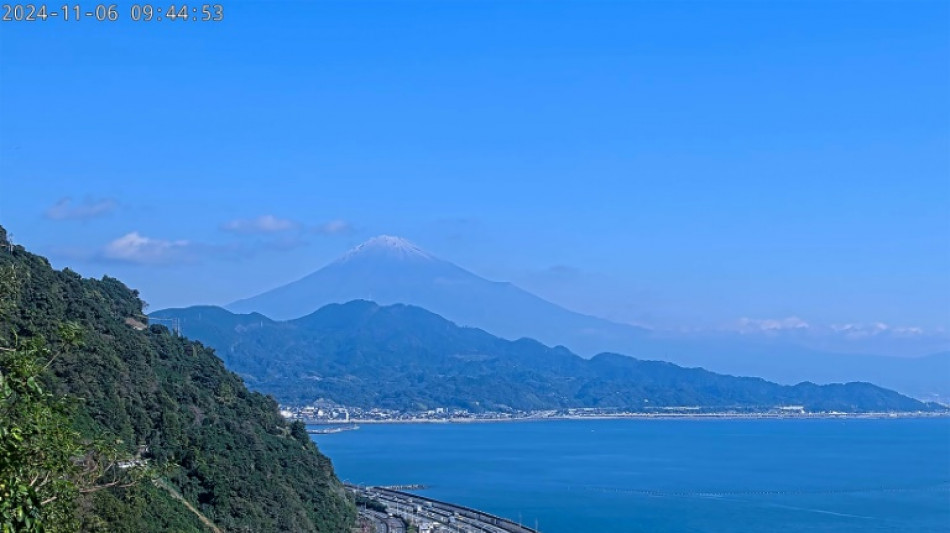
RBGPF
0.1600


Snow has finally fallen on Mount Fuji, images showed Wednesday, after warm weather led to the Japanese mountain's longest-ever stint with bare slopes.
The volcano's famous snowcap begins forming on October 2 on average, and last year snow was first observed by government meteorologists on October 5.
Japan's weather agency -- which compares conditions from exactly the same location, Kofu City, each year -- has not yet announced a new record for the slowest start to the snowcap, due to cloud cover at its monitoring station.
But this year already marks the latest arrival of snow since comparative data became available in 1894, beating the previous record of October 26 -- seen twice, in 1955 and 2016.
Photographs taken from different points around Japan's highest mountain where the skies were clearer early on Wednesday showed a dusting of snow on its peak.
"These are photos of Mount Fuji, seen from the city hall this morning. We could see a thin layer of snow cover near the summit," said a post on the official X account of Fuji City, in Japan's central Shizuoka region.
Many others in the area also posted their own photographs of snow on the country's highest mountain, and aerial footage from national broadcaster NHK showed close-ups of white powder on the rocky slopes.
"Finally, the first snow cover! Mount Fuji looks good with snow," said a post from a nursing home, also in Fuji City.
A Japan Meteorological Agency (JMA) official at the Kofu office told AFP on Wednesday morning it was still too cloudy there to declare a new record. That was still the case in the afternoon.
"The temperature is low today," so any snow on the mountain will likely stay put for now, the official said.
Global warming is one factor that has led to the slow snow cover, he said. "The temperature in October at the top of Mount Fuji was warmer than the average."
Japan's summer this year was the joint hottest on record -- along with 2023 -- as extreme heatwaves fuelled by climate change engulfed many parts of the globe.
Mount Fuji is covered in snow for most of the year, but during the July-September hiking season, more than 220,000 visitors trudge up its steep, rocky slopes.
Many climb through the night to see the sunrise from the 3,776-metre (12,388-foot) summit.
The symmetrical mountain has been immortalised in countless artworks, including Hokusai's "Great Wave". It last erupted around 300 years ago.
T.Sato--JT